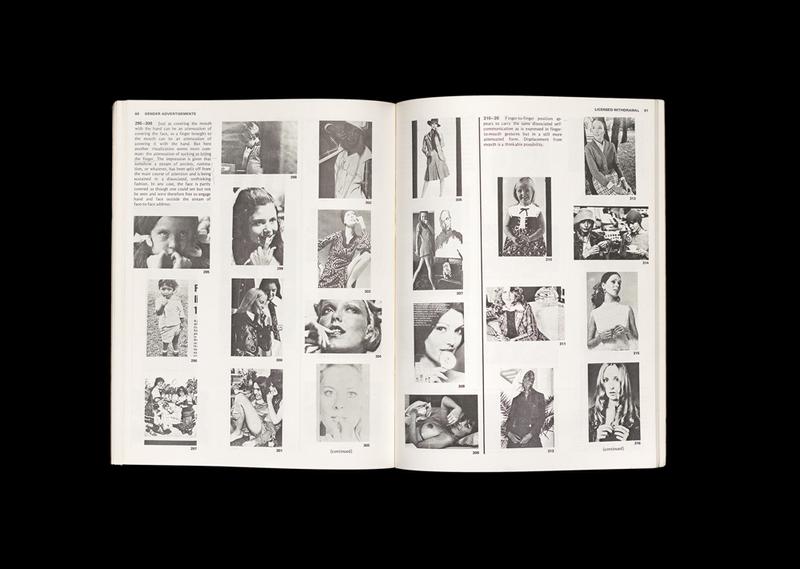Photography, Advertising and Feminism through the Prism of Erving Goffman’s Gender Advertisements
Gender Advertisements (1979) was Erving Goffman’s only book to contain illustrations. In it the sociologist offered an innovative, gender-inflected analysis of body positioning drawing on his new concept of “hyper-ritualisation”: advertising’s codification of everyday acts via exaggerated mises en scène. This was firstly an adaptation to a new context of an anthropological tradition going back to BalineseCharacter (1942), Gregory Bateson and Margaret Mead’s visual study of behaviour; and secondly a rejection of an approach, famously embodied by John Berger’s Ways of Seeing (1972), which attributed to advertising the power to create an “illusory” imaginative realm. Echoes of these questionings can be found in the work of many artists: gender clichés in advertising and the movies as seen by Richard Prince, Cindy Sherman and Robert Heinecken, and the body positionings portrayed by feminist Marianne Wex represent a core critical impetus in the photographic output of the period.

Erving Goffman, Gender Advertisements, New York, Harper Colophon Books, 1979, pp. 60-61.
Damiens Grosjean holds a master’s degree in Medieval French and Art History from the University of Lausanne, with special emphasis on the history of the book and critical editing of texts. His master’s dissertation, defended in Lausanne in 2017, was titled Seriality, Appropriation and Stereotyping in Cindy Sherman’s Untitled Film Stills.
Keywords: Erving Goffman, hyper-ritualisation, advertising, feminism and gender studies, representation theory, visual sociology, John Berger
Citation: Damiens Grosjean, « L’‹ hyper-ritualisation › en images. Photographie, publicité et féminisme à la lumière de Gender Advertisements d’Erving Goffman », Transbordeur. Photographie histoire société, no. 3, 2019, pp. 188-201.